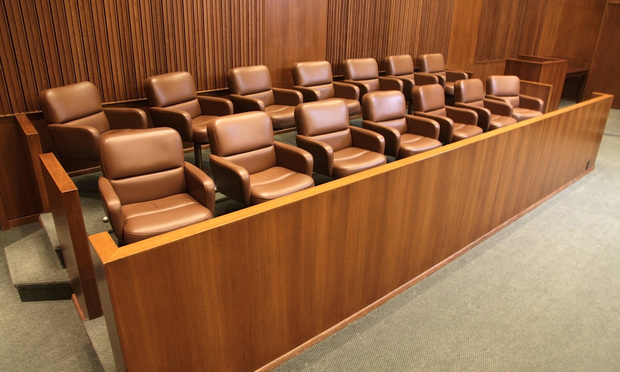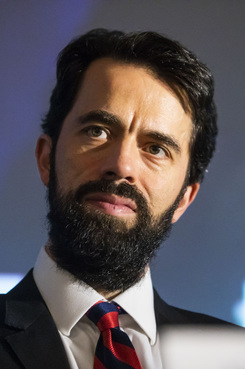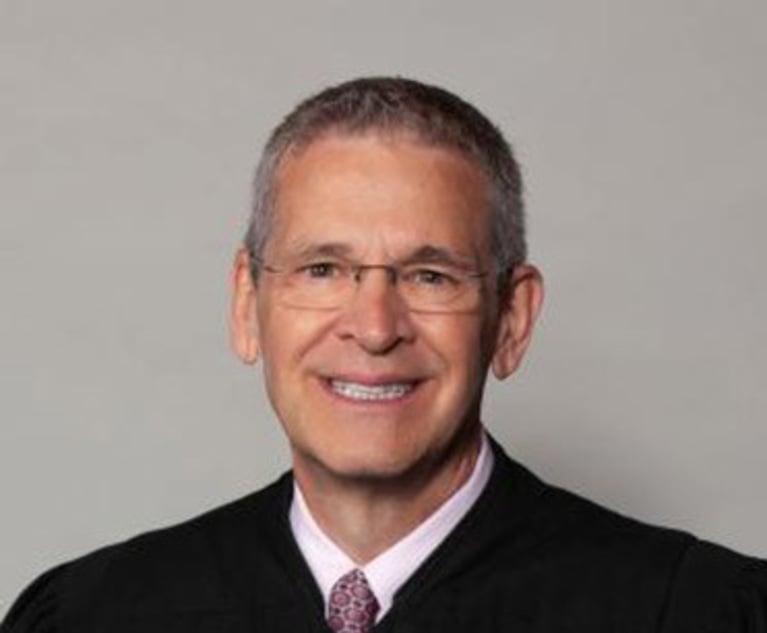Judges 'Free to Adapt' Jury Instructions, Third Circuit Says
"There is more than one way to shear a sheep. And there is certainly more than one way to instruct a jury properly," Third Circuit Judge Stephanos Bibas wrote.
October 01, 2019 at 12:00 PM
4 minute read
The original version of this story was published on The Legal Intelligencer
 Photo: Jason Doiy
Photo: Jason Doiy
A federal appeals court has upheld a defendant's conviction of conspiracy to distribute crystal meth, rejecting his argument that the judge's jury charge on circumstantial evidence was faulty because it was not lifted verbatim from the court's model jury instructions.
The U.S. Court of Appeals for the Third Circuit denied defendant Francisco Ramos' appeal seeking a new trial.
"There is more than one way to shear a sheep. And there is certainly more than one way to instruct a jury properly. While pattern jury instructions are often sound templates, they are not holy writ," Judge Stephanos Bibas wrote in the Third Circuit's Monday nonprecedential opinion. "Judges are free to adapt them or adopt their own phrasing, so long as their instructions taken as a whole explain the law clearly and correctly. Here, Francisco Ramos argues that two jury instructions were wrong. But they did not plainly misstate the law."
Ramos argued at trial that he was not guilty because he had not entered into any criminal agreement, according to Bibas. At Ramos' trial, the judge instructed the jury on the law regarding circumstantial evidence and conspiracies. He was subsequently convicted.
Ramos raised two challenges against the circumstantial evidence instruction, arguing that the judge should have instructed the jury to weigh competing inferences when evaluating circumstantial evidence, according to Bibas. In his second challenge, Ramos argued that the judge's example of circumstantial evidence was flawed because it permitted only one possible explanation.
 Judge Stephanos Bibas, of the U.S. Court of Appeals for the Third Circuit. Photo: Diego M. Radzinschi/ALM
Judge Stephanos Bibas, of the U.S. Court of Appeals for the Third Circuit. Photo: Diego M. Radzinschi/ALM"Ramos argues that the judge should have told the jury that it had a duty to weigh the competing inferences one could draw from circumstantial evidence, not to identify a single correct inference," Bibas said. "To be sure, the court must tell the jury to weigh competing inferences. But Ramos's claim fails because the judge instructed the jury on precisely this issue."
Bibas also said the judge's example of circumstantial evidence was sufficient.
"The judge's illustration was simple enough: We enter a building one morning under clear skies. When we leave in the afternoon, we see 10 feet of snow outside," Bibas said. "Though we did not see it happen, '[w]e can conclude based on [the] reasonable evidence in front of us that a blizzard happened during the day.' As the judge put it, '[w]e never saw it, but the evidence is there.' This is a variant of our model instruction: if we see someone enter a building with a wet raincoat and a wet umbrella, we may reasonably infer that it was raining."
Ramos claimed that those scenarios were open to alternate interpretations and were misleading to the jury.
"No matter the form of precipitation, in each case the most obvious inference is clear. The point of the judge's example, and of our model instruction, is to explain the idea of circumstantial evidence simply and without referring to the facts of the crime charged. The judge's example did just that. While the rain example is preferable for the reasons Ramos notes, the snow example was sensible too," Bibas said.
Similarly, Bibas said the conspiracy instruction was proper.
"Ramos also argues that the judge's conspiracy instruction erred by diverging from our model instruction in two ways: it called conspiracies inherently secretive, and it noted that they are often proven by circumstantial evidence. Neither argument comes close to showing error, let alone plain error," Bibas said.
Ramos' public defender, Catherine C. Henry, did not respond to a request for comment; nor did the U.S. Attorney's Office for the Eastern District of Pennsylvania.
This content has been archived. It is available through our partners, LexisNexis® and Bloomberg Law.
To view this content, please continue to their sites.
Not a Lexis Subscriber?
Subscribe Now
Not a Bloomberg Law Subscriber?
Subscribe Now
NOT FOR REPRINT
© 2025 ALM Global, LLC, All Rights Reserved. Request academic re-use from www.copyright.com. All other uses, submit a request to [email protected]. For more information visit Asset & Logo Licensing.
You Might Like
View All


On the Move and After Hours: Buchanan; Malamut Law; Genova Burns; Faegre Drinker
3 minute readTrending Stories
Who Got The Work
J. Brugh Lower of Gibbons has entered an appearance for industrial equipment supplier Devco Corporation in a pending trademark infringement lawsuit. The suit, accusing the defendant of selling knock-off Graco products, was filed Dec. 18 in New Jersey District Court by Rivkin Radler on behalf of Graco Inc. and Graco Minnesota. The case, assigned to U.S. District Judge Zahid N. Quraishi, is 3:24-cv-11294, Graco Inc. et al v. Devco Corporation.
Who Got The Work
Rebecca Maller-Stein and Kent A. Yalowitz of Arnold & Porter Kaye Scholer have entered their appearances for Hanaco Venture Capital and its executives, Lior Prosor and David Frankel, in a pending securities lawsuit. The action, filed on Dec. 24 in New York Southern District Court by Zell, Aron & Co. on behalf of Goldeneye Advisors, accuses the defendants of negligently and fraudulently managing the plaintiff's $1 million investment. The case, assigned to U.S. District Judge Vernon S. Broderick, is 1:24-cv-09918, Goldeneye Advisors, LLC v. Hanaco Venture Capital, Ltd. et al.
Who Got The Work
Attorneys from A&O Shearman has stepped in as defense counsel for Toronto-Dominion Bank and other defendants in a pending securities class action. The suit, filed Dec. 11 in New York Southern District Court by Bleichmar Fonti & Auld, accuses the defendants of concealing the bank's 'pervasive' deficiencies in regards to its compliance with the Bank Secrecy Act and the quality of its anti-money laundering controls. The case, assigned to U.S. District Judge Arun Subramanian, is 1:24-cv-09445, Gonzalez v. The Toronto-Dominion Bank et al.
Who Got The Work
Crown Castle International, a Pennsylvania company providing shared communications infrastructure, has turned to Luke D. Wolf of Gordon Rees Scully Mansukhani to fend off a pending breach-of-contract lawsuit. The court action, filed Nov. 25 in Michigan Eastern District Court by Hooper Hathaway PC on behalf of The Town Residences LLC, accuses Crown Castle of failing to transfer approximately $30,000 in utility payments from T-Mobile in breach of a roof-top lease and assignment agreement. The case, assigned to U.S. District Judge Susan K. Declercq, is 2:24-cv-13131, The Town Residences LLC v. T-Mobile US, Inc. et al.
Who Got The Work
Wilfred P. Coronato and Daniel M. Schwartz of McCarter & English have stepped in as defense counsel to Electrolux Home Products Inc. in a pending product liability lawsuit. The court action, filed Nov. 26 in New York Eastern District Court by Poulos Lopiccolo PC and Nagel Rice LLP on behalf of David Stern, alleges that the defendant's refrigerators’ drawers and shelving repeatedly break and fall apart within months after purchase. The case, assigned to U.S. District Judge Joan M. Azrack, is 2:24-cv-08204, Stern v. Electrolux Home Products, Inc.
Featured Firms
Law Offices of Gary Martin Hays & Associates, P.C.
(470) 294-1674
Law Offices of Mark E. Salomone
(857) 444-6468
Smith & Hassler
(713) 739-1250







